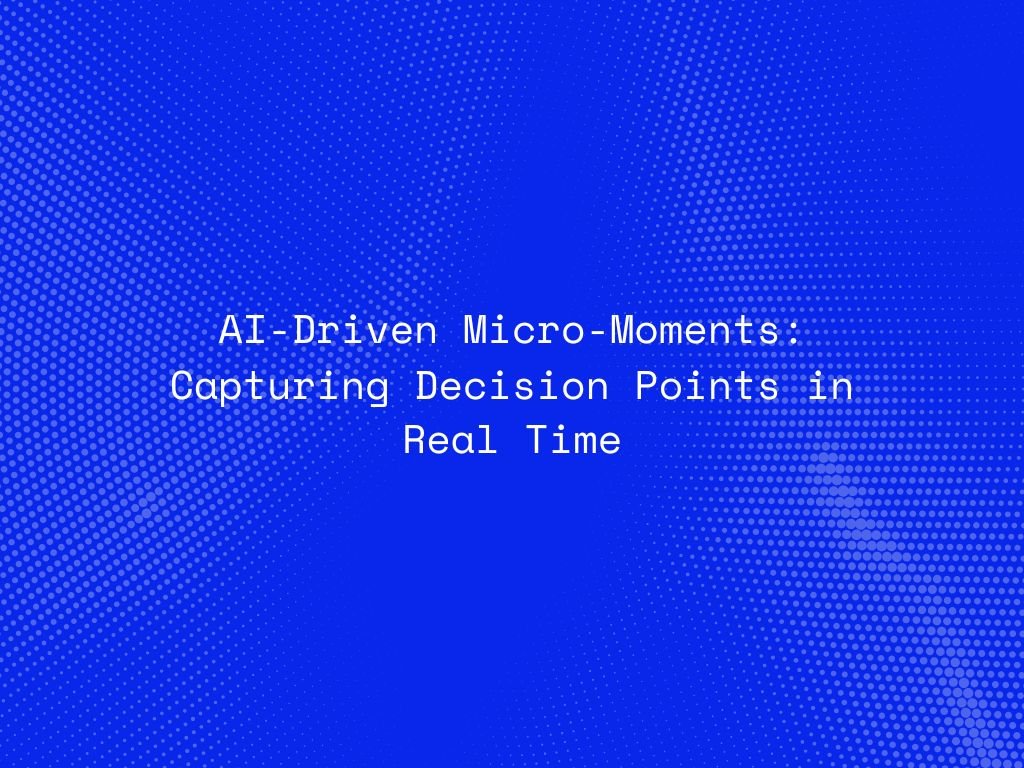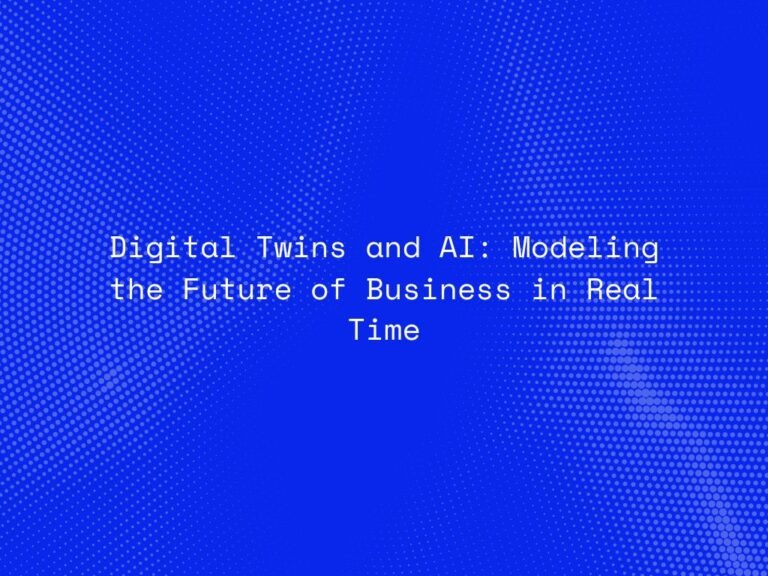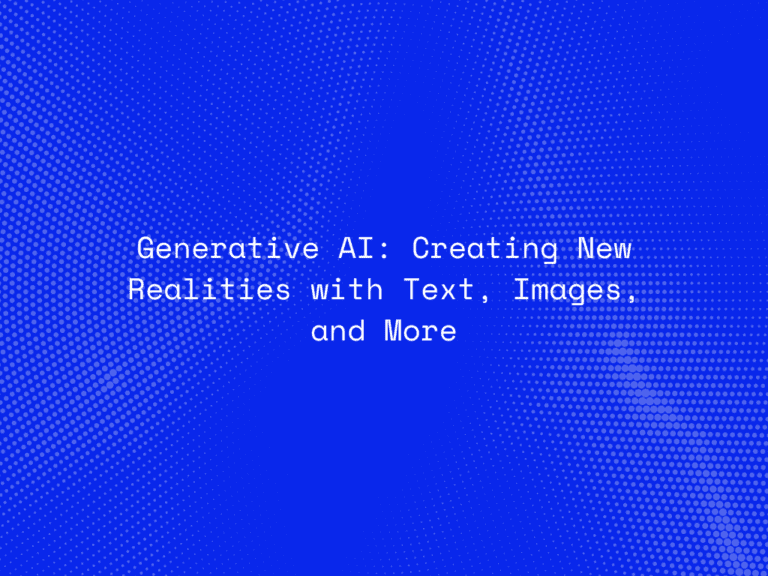In an era where attention spans are shrinking and digital interactions happen in milliseconds, the most powerful opportunities for brands, platforms, and enterprises lie in micro-moments — those fleeting instances when users make quick, intent-driven decisions.
Whether it’s searching for a nearby café, booking a ride, or choosing a product after seeing an ad, micro-moments define the modern customer journey. What makes this possible at scale today is Artificial Intelligence (AI) — capable of recognizing intent, predicting behavior, and responding in real time.
The rise of AI-driven micro-moment marketing and engagement is transforming how businesses understand and interact with their audiences — replacing static strategies with dynamic, context-aware responsiveness.
What Are Micro-Moments?
The term micro-moments, coined by Google, refers to those critical points in time when people turn to their devices with a specific intent — to know, go, do, or buy. These are not planned interactions but spontaneous, high-value decision opportunities.
For example:
-
When a user searches “best running shoes near me” before a morning jog — that’s a micro-moment.
-
When a traveler looks for “cheap flights to Tokyo this weekend” — another micro-moment.
-
When someone sees a new gadget online and instantly looks up “reviews and comparisons” — that too is a micro-moment.
Each of these represents a potential conversion point — if the system can detect, predict, and respond at that exact moment.
The Role of AI in Capturing Micro-Moments
The challenge with micro-moments is their ephemeral nature. They occur across channels — mobile apps, social media, search engines, IoT devices — and often last just seconds. To respond effectively, systems must process vast streams of behavioral data in real time.
This is where AI and machine learning come into play.
AI models can:
-
Detect intent signals through search patterns, contextual data, and user behavior.
-
Predict next actions using probabilistic models and historical analytics.
-
Deliver hyper-personalized responses — such as recommendations, offers, or content — within milliseconds.
-
Optimize engagement loops through continuous feedback and adaptive learning.
Essentially, AI allows businesses to be present, relevant, and responsive at the precise moment users are most likely to act.
Technologies Powering AI-Driven Micro-Moments
-
Real-Time Data Streaming
Platforms like Kafka, Flink, and AWS Kinesis enable real-time ingestion and analysis of behavioral data, empowering AI to detect micro-moments as they happen. -
Predictive Analytics and Reinforcement Learning
AI models continuously learn from user interactions to predict intent and refine responses. Reinforcement learning helps systems choose the best action for engagement or conversion. -
Context-Aware Computing
Combining data from location, device, time, and behavior, context-aware systems adapt messages or recommendations to match the user’s current environment. -
Natural Language Processing (NLP)
NLP allows systems to interpret and respond to queries, voice inputs, or text messages instantly — a key capability in conversational micro-moment experiences. -
Edge AI
By processing data closer to the source, Edge AI ensures ultra-low latency — essential for capturing real-time decision points in mobile and IoT environments.
Applications Across Industries
Retail & E-Commerce:
AI detects when customers are comparing products or abandoning carts and instantly offers personalized discounts or product bundles.
Travel & Hospitality:
Dynamic pricing and availability updates triggered by search intent or browsing behavior help travel platforms convert undecided users.
Finance & Banking:
AI identifies key transactional behaviors — like checking balance or loan eligibility — and proactively suggests relevant financial products.
Healthcare:
In telemedicine, AI identifies patient micro-moments (e.g., symptom searches, appointment lookups) to trigger timely outreach or recommendations.
Media & Entertainment:
Streaming services use AI to detect mood and time-of-day patterns, serving the perfect content when users are most receptive.
Challenges in Real-Time Decisioning
While AI-driven micro-moments offer immense potential, achieving them effectively requires overcoming several challenges:
-
Data fragmentation across platforms and devices can obscure real-time intent signals.
-
Latency and processing delays can cause businesses to miss critical opportunities.
-
Privacy concerns and consent management must be handled carefully when using behavioral data for prediction.
-
Over-automation risks — poorly tuned systems can feel intrusive rather than helpful.
To address these, companies are adopting ethical AI frameworks, ensuring transparency and consent-driven personalization while maintaining responsiveness.
The Strategic Advantage of AI-Driven Micro-Moments
Organizations that master AI-driven micro-moments gain a powerful competitive edge. They don’t just react to user intent — they anticipate it, creating seamless, predictive experiences that feel human and personalized.
Instead of broad marketing campaigns, these enterprises operate with dynamic intent-based engagement, where every interaction is optimized in real time. Over time, this leads to stronger customer relationships, higher conversion rates, and more efficient marketing spend.
The Future: Predictive Engagement and Cognitive Context
As AI systems become more contextually intelligent, micro-moment strategies will move beyond reaction and into anticipation.
Future systems will predict user intent before it’s explicitly expressed — for example, suggesting a service before the user even searches for it. With multimodal AI integrating speech, gesture, and visual cues, micro-moments will evolve into cognitive moments — where machines interpret subtle signals and act proactively.
In this world, AI will not just respond to decisions — it will help shape them.
Conclusion
The future of digital interaction belongs to those who can engage users in the moment that matters most.
AI-driven micro-moments transform fleeting interactions into opportunities — by combining real-time data, predictive intelligence, and contextual awareness.
In a world where the next decision is just one second away, AI ensures businesses are ready, relevant, and responsive — exactly when it counts.




